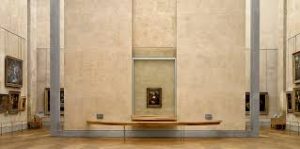HISTORY OF THE ORIGIN AND DEVELOPMENT OF THE WHITE ART
 Thread painting
Thread painting
“A tapestry is a beauty, slowly created by warm, skillful hands, a calm mind and a sensitive soul.”
I. Dvorkina
Today, a variety of decorative and applied art, traditionally called a “tapestry”, acts as a complex artistic phenomenon that combines the qualities of several genres at once – from “hand weaving” to “textile” sculpture.
Initially, the concept of tapestry was a method of producing fabric that looks like a wall lint-free carpet with a plot or ornamental composition. This carpet was woven manually, from colored or silk threads through their cross-weave.
The word “tapestry” (fr.gobelin) itself arose in the 17th century. in France and is nothing more than the use of the name of the Tapestries brothers in the designation of the name of wall carpets. The story goes that in 1601, the Flemish Francois de la Planchet bought a dye for the wool of the Tapestry family near Paris. And after 60 years, this small workshop for the production of textiles, due to the high level of “textile cloths” emerging from its walls, was reorganized into the Royal Tapestry Brothers Manufactory, and then into the Royal Furnishings Manufactory. The production was headed by the president of the Academy of Painting, “the first painter of the king”, Charles Lebrun. He himself created sketches for many tapestries of his manufactory, thereby forming a certain style, color and means of artistic expression of “woven paintings”, which we now call classics of the genre.
Despite the significant costs required to maintain the workshops and the lack of large revenues from the production of tapestries, the Royal Tapestry Manufactory continued to exist under all successive French governments since then. And the most interesting thing that continues to exist to this day, as an art institution that makes up the pride of this country.
Here it is necessary to note the fact that initially tapestries, woven lint-free carpets, were called trellises. The art of trellis, as you know, is one of the oldest on earth. The name of the classic Western European trellis (Italian spalliera) is derived from the Italian designation of the lattice for fresh flowers and in this case defines the concept of an old smooth plot carpet, which was created using one of the simplest weaving techniques – cross or plain weaving of threads. As you know, in the Middle Ages, in the south of Europe, the walls of rich interiors were decorated mainly with fresco paintings, and in the more northern regions, trellis began to replace this painting, borrowing from it both plots and some tricks of color extensions. Moreover, in cold stone buildings, trellis were assigned not only aesthetic, but also utilitarian: they retained heat.
The earliest trellises are German medieval designs, and the heyday of trellis weaving occurred in France. But wherever trellises are created, their manufacture has always been a very expensive and painstaking process. Therefore, only members of the royal families and the most affluent noble, who often created special trellis workshops with their castles, could afford to buy wonderful “woven paintings”. The author was always a painter, his duties included the creation of a detailed sketch of the cardboard of the future woven work. Then the cardboard specialist enlarged this sketch and carefully executed it already on the scale of the work. And finally, the master weaver converted the resulting cardboard into textile material, using silk, wool, and sometimes silver and gold threads. Most often, these “textile canvases” were ordered in series, in which sometimes there were up to 12 or more carpets, united by a single theme or storyline.
Treated trellises are always very expensive. A very interesting fact is known from the history of carpet weaving, when a French prince was bought from a Turkish captivity for a series of trellises. Since then, espalier art has become fashionable, and many great artists such as Raphael, Rubens, Van Dyck, Boucher and others have shown interest in creating sketches.
The history of trellis art has gone through a number of stages, from fall to rise, decline and prosperity, changing countries, names and acquiring new technical techniques and artistic possibilities. Now, becoming a tapestry, this art is subject to the laws of exposure not only to weaving and painting, but also to plastic. And the tapestry itself has evolved from a smooth plot carpet, into an innovative experiment, representing the fusion of texture, relief and materials of various contents that are woven into the fabric along with traditional weaving materials and this, of course, helps the tapestry to gain new and stable positions in contemporary art.




